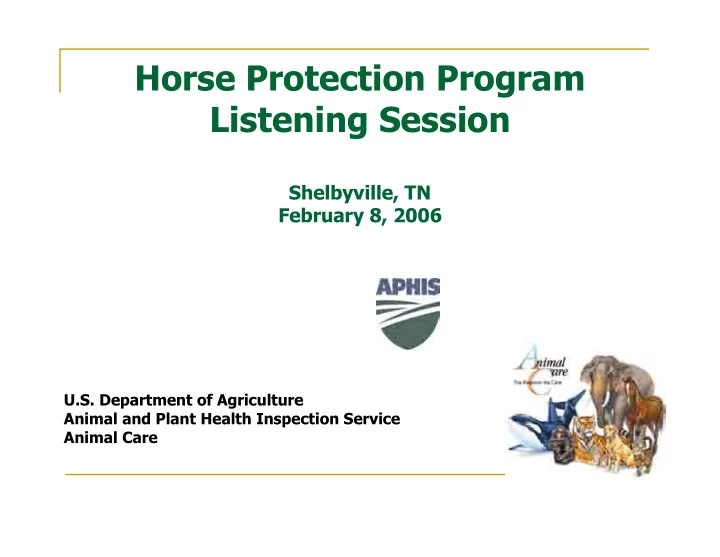

If horses are so susceptible to pain originating from the distal forelimb, wouldn’t you want to be very protective of that area?
When seasoned knowledgeable trainers are entrusted with the care and custody of a Tennessee Walking Horse, knowing the horse will be subjected to HPA inspections, how do the skin changes we see so regularly happen?
The skin pathology seen in the Tennessee Walking Horse show horse is unlike anything I saw in fifteen years of equine practice. What is the explanation that doesn’t include the use of soring chemicals or training in heavy chains?
How does the skin How does the skin on TWH horse forelimb on TWH horse forelimb pastern pastern become so unlike the become so unlike the the skin on the hindlimb hindlimb? ? the skin on the
So- How does a horse’s leg end up like this, and why does a trainer have to “work to keep a horse in compliance with the “scar rule”.
Preventative measures used to avoid scar rule violations: “Working Grease” Stockings “Time off”
Why are horses working in other disciplines in the equine industry not wearing stockings, working grease, or taking time off from training to preserve tissue normalcy?
Why Tennessee Walking Horses???
Sweat? Friction? Wear and tear? Grime? Hard work? Genetics? Soap? Age? Action devices? Soring chemicals? “Treatments”? “Working grease”? Stockings? How do other disciplines do it????
Eventing Mud Sweat Wear and Tear (miles) Normal Pastern Skin
Dressage Mud Sweat Wear and Tear (miles) Normal Pastern Skin
Cutting Mud Sweat Immeasurable Friction Normal Pastern Skin
Cutting Mud Sweat Immeasurable Friction Normal Pastern Skin
Reining Why don’t these horses have any abnormal skin on their pasterns?
How does skin on these horses’ pasterns remain normal? Water? yes Boots? yes Sweat? yes Grime? yes
How about these horses?
The reining horse in this picture may define “friction” as a potential cause of tissue changes, but no “scar rule” type lesions appear on these horses.
Polo Mud Sweat Immeasurable Friction Normal Pastern Skin Normal Pastern Skin
How about this Polo horse? Pastern friction? Yes-at speed Full range of motion of lower limb joints? Yes Pastern skin lesions? No
Another Polo horse- Pastern friction? Yes-at speed Full range of motion of lower limb joints? Yes Pastern skin lesions? No
Race Horses ? Clean pasterns here as well
Hackney Ponies? Hackney Ponies? Huge range of Huge range of motion, motion, great speed, great speed, action devices, action devices, sweat, grime, sweat, grime, friction… ….. .. friction normal normal pastern pastern skin skin
American American Saddlebred: Saddlebred: Speed, friction, Speed, friction, action devices, action devices, sweat, grime…… …… sweat, grime normal pastern normal pastern skin skin
Let’s recap………
Sweat? Friction? Wear and tear? Grime? Hard work? Genetics? Soap? Age? Action devices? Soring chemicals? “Treatments”? “Working grease”? Stockings? How do other disciplines do it????
Sweat? All working horses Friction? All working horses Wear and tear? All working horses Grime? All working horses Hard work? All working horses Genetics? All working horses Soap? All working horses Age? All working horses Action devices? TWH, ASB, Morgan, Hackney Soring chemicals? TWH ? “Treatments”? TWH ? “Working grease” TWH ? Stockings? TWH ?
Has the whole story been told? What about shoeing, and its effects on skin tension, blood flow, lymphatic drainage, and skin integrity? Do contracted heels, and the resultant lessened shock absorbing capabilities of the lower hoof transfer this shock to the coronary band?
Is unbalanced shoeing a potential explanation for the asymmetrical pathology we see repeatedly on TWHs? Why are so many scar rule violations cited due to diseased skin on the medial portion of the posterior surface of the pastern?
Let’s talk about shoeing, and its effect on the skin of the posterior pastern.
Why are the patterns of skin lesions of the posterior pastern usually asymmetrical?
Recommend
More recommend